Bedouin Girls
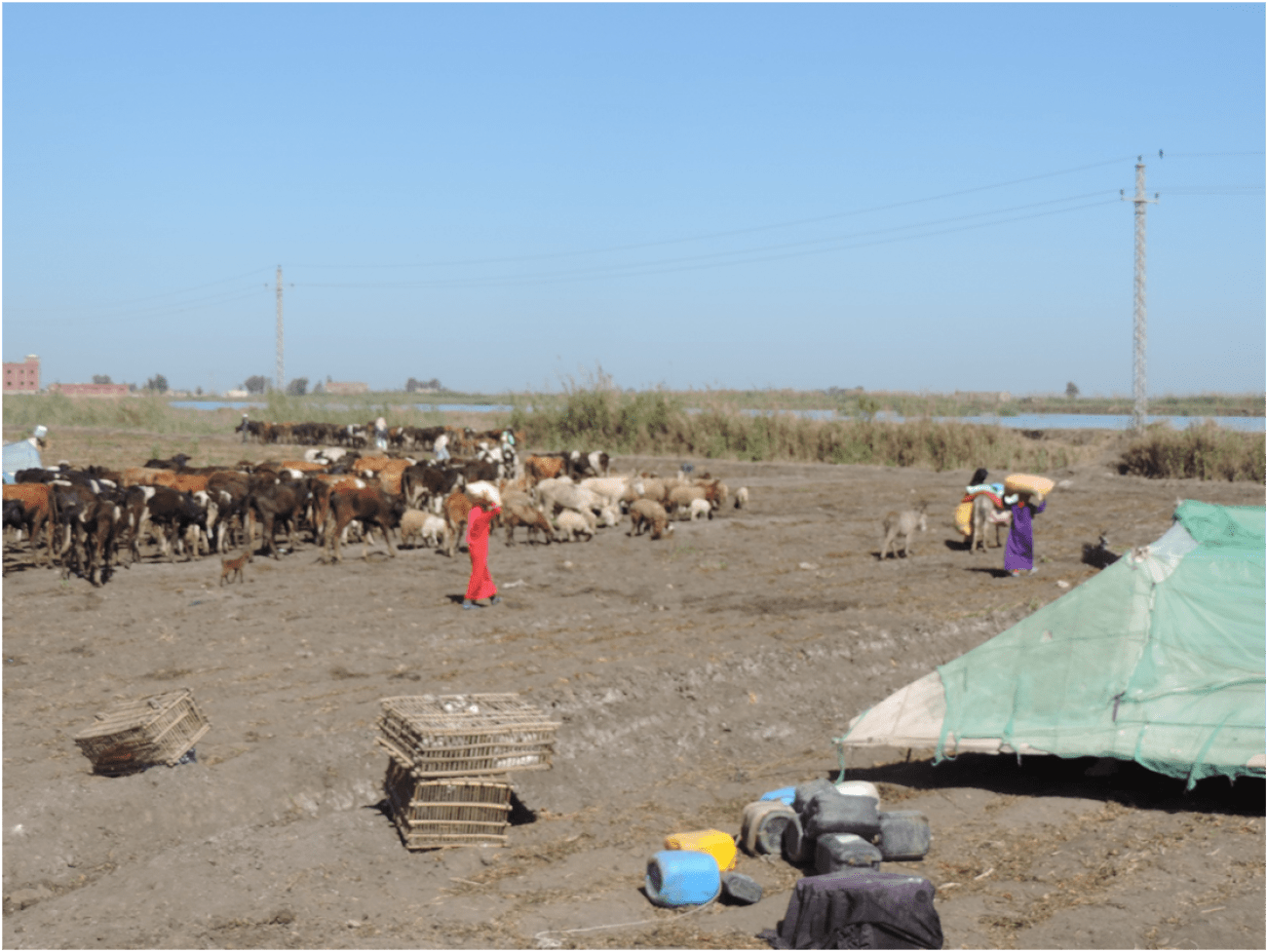
“We move around the entire year”, Layla says, “for us, this is the best life”. The Bedouin tents are made in a way that enables the families to pack them up quickly and transport them to another place. They move on donkeys, carts, motor bikes, and, in some cases, a pickup truck that is either owned by the family or rented. As Nour’s father-in-law explains, the family has a set routine in working together to pack up the camp and build it up again, every single family member taking on a specific role in the process: “In two hours I can move this tent to the other field”.
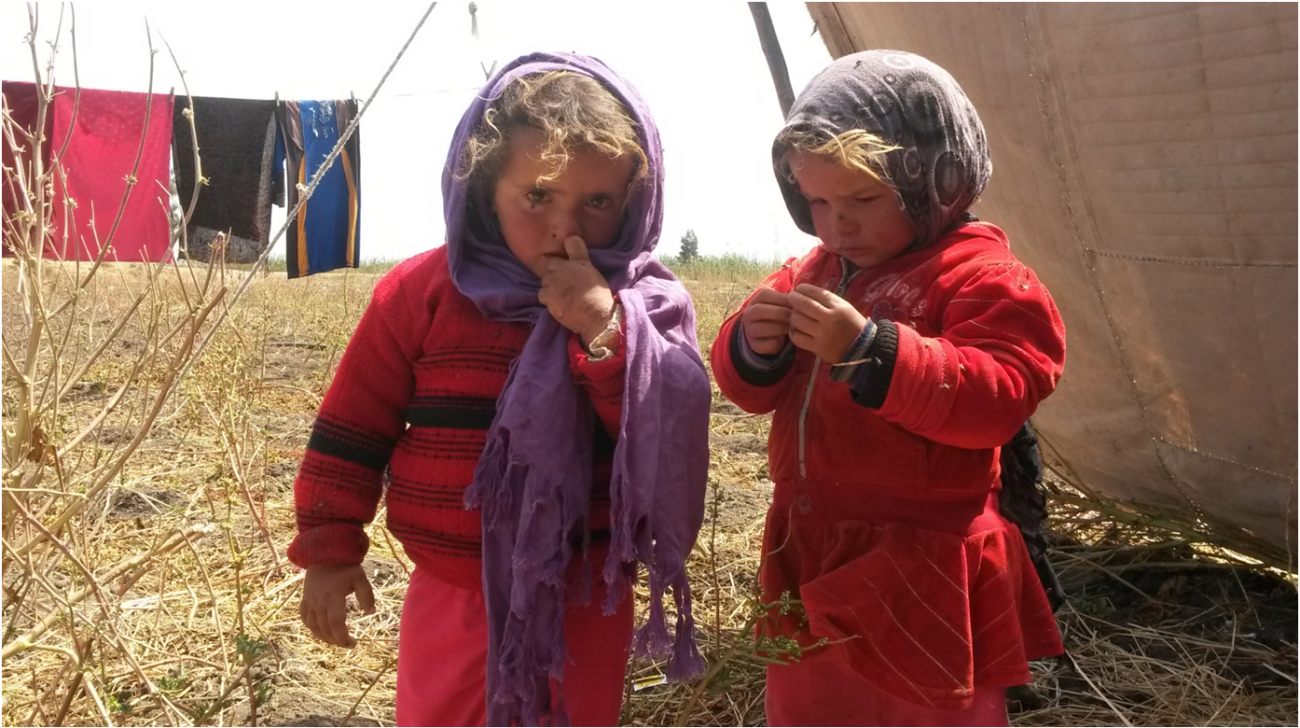
Nour’s two young daughters, two and four years old, dressed in red pullovers, and pink pants, stand near the tent’s opening. Layla is carrying Nour’s baby girl, Shaymaa, while her own son, Youssef, is playing near her legs. Both women as well as the children look very healthy and well nourished, with rosy cheeks from spending their lives outside in the fresh air. When asked if the cold winter nights near Egypt’s Mediterranean Coast, which is only 50 kilometers away, are not too hard when staying outside, both women shake their heads. “No, we are used to this”, Rasha says. Are they afraid at night? “Tsss”, they go, the Egyptian sound for “no, not at all”, “nothing happens here”.
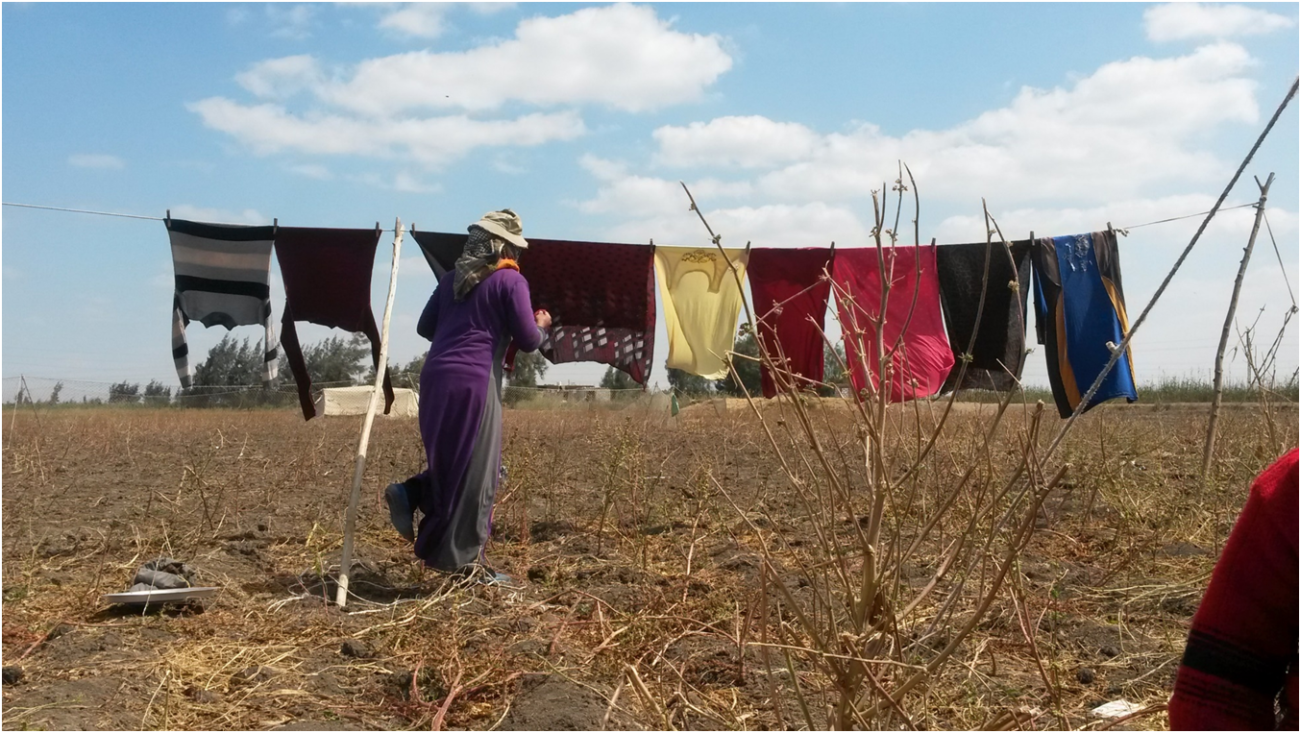
Around the tents, chickens, ducks and a few dogs are running around. Nour is washing her children’s clothes in a simple bucket with a small packet of washing detergent that she pulls out of a plastic bag. Once she has finished, she hangs all the small pants and jumpers up on the clothes line, next to the adults’ clothes. The clothes are neither new nor expensive, but Nour is looking after them with care. The two women are proud of their Bedouin life and repeatedly ask: ”What do you think about the way we live?”, insisting to have pictures taken of their children and their tents. “For us, this is the best life”, Layla affirms with a big smile.

Besides the make-shift tents that are usually open at the front, the camp is made up of a couple of carpets for the family members to sit on. It also has a small place to make fire in a metal bowl with next to it a tea pot, some tea glasses, spoons and other very basic plates and dishes. A clothes line is spun up from one tent to the other, and there is some simple, make-shift furniture such as a chair made out of an old box and a baby crate made from a piece of cloth or tent material. The Bedouins sleep on blankets on the ground. Nour’s and Layla’s extended family has a total of six tents placed on three different fields, and there are two separate cow herds belonging to parts of the extended family.
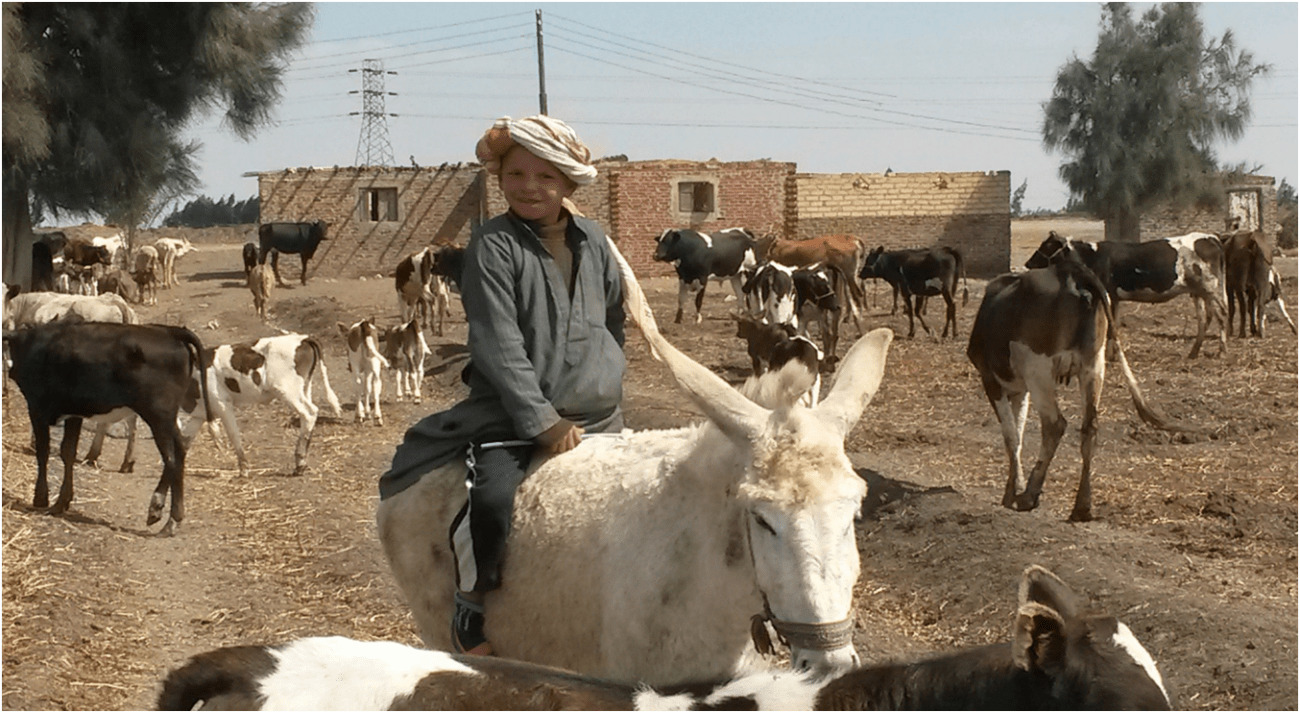
In the nomad Bedouin families, the married women tend to the children, the cooking and washing, fetching water, looking after the tents and minding the ducks and chickens. Women also milk the cows and are sometimes involved in the care of the animal herds. Teenage girls and boys are seen herding the animals around, taking them to nearby canals to drink several times a day. The family has a herd of a local breed of sheep mixed with cows. The women milk the cows in order to cover the needs of their own family and sometimes for other Bedouin families staying around them in the same area. The milk production is around 2-3 liters per cow per day. For the family, the benefits of having the cows are the calves, as the cows calve every 1-1.5 years. The cattle are sold to traders at the end of the season who specifically approach the Bedouin families to buy livestock.
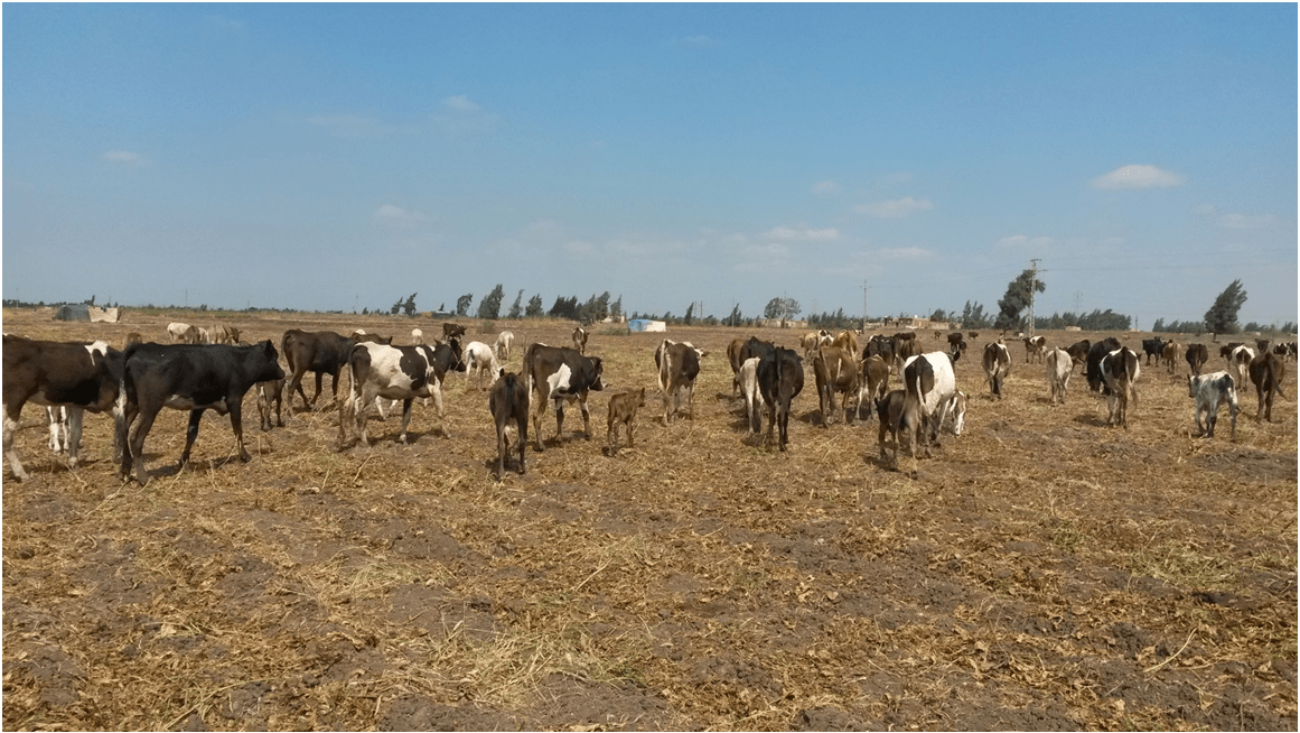
The nomad families move hundreds of kilometers across the country, always together with their animals. The families in the El Salam Canal area would cross over into Sinai, move into Ismailiya, and several cross other governorates towards Cairo, moving south along the banks of Bahr el Baqar drain. It is not coincidental therefore that the name of this drain and travel route literally refers to ‘the cow’. All members of the Bedouin families seem to know exactly when they would move on to a new campground and what the next location would be. When asked when they would pack up, the replies are very clear: “next Wednesday”, or “in nine days’ time”. While some families own a pickup truck, others would hire one in order to move some of their belongings around if needed. The men in the family own several motorbikes that they use to access the market, buy groceries from the local shops or take a family member to the doctor. “We cook here every day”, Nour says. Although the El Salam Canal area gave them everything they needed, grocery options were still superior in Ismailiya, the women insist. “In Ismailiya, we cook fresh things every day”, Layla explains, “here, we do not always have access to fresh things”.
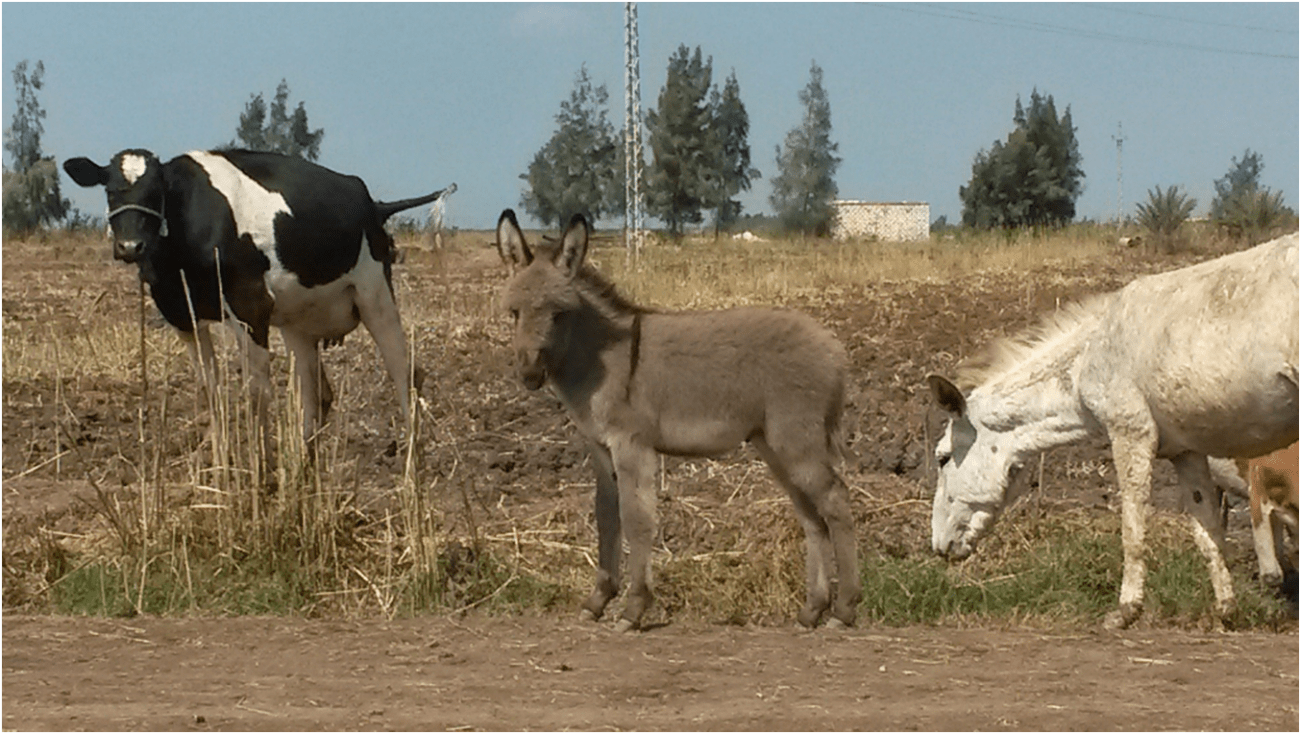
Despite being constantly on the move, the nomads develop certain patterns of movement that shape their livelihood. Many families return to the same fields each year during a particular season, attracted by a particular type of crop. Nour’s and Layla’s families have been coming to the same land on the El Salam Canal each winter for years now and claim that they know the landowner very well. They return specifically at this time of year in order to benefit from the end of the sugar beet season, giving the animals the leftover sugar beet stubbles as forage. Like most nomad families in the area, Nour’s and Layla’s extended family owns a house in Ismailiya, where some family members live permanently, providing some sense of home. When asked what their favorite place was, both Nour and Layla agree: Ismailiya.
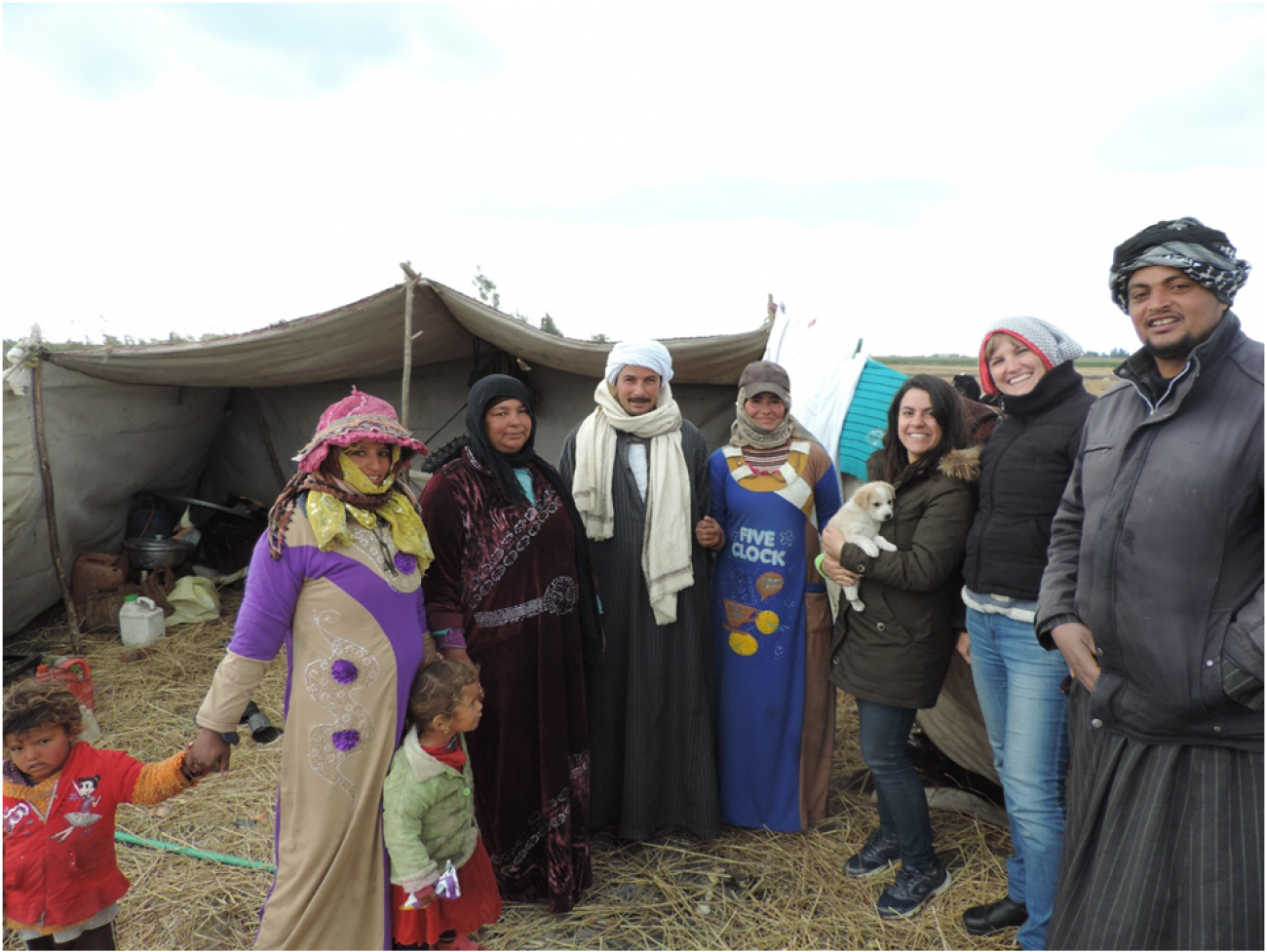
Among the Bedouins with nomad lifestyle, rules of seclusion are much more relaxed than among sedentary Bedouins, where women usually occupy the private parts of the house and are never seen by male guests. Nour and Layla, as most other nomad women we visited, wear colorful galabeyas and head scarves, but no face veils. They move freely among the men, even the visitors, and openly address and speak to male visitors. Some Bedouin families even allow us to take group pictures with all male and female family members together with the visitors in the pictures. Within the extended families, male and female relatives usually deal with each other in friendly, open ways, joking and teasing each other.
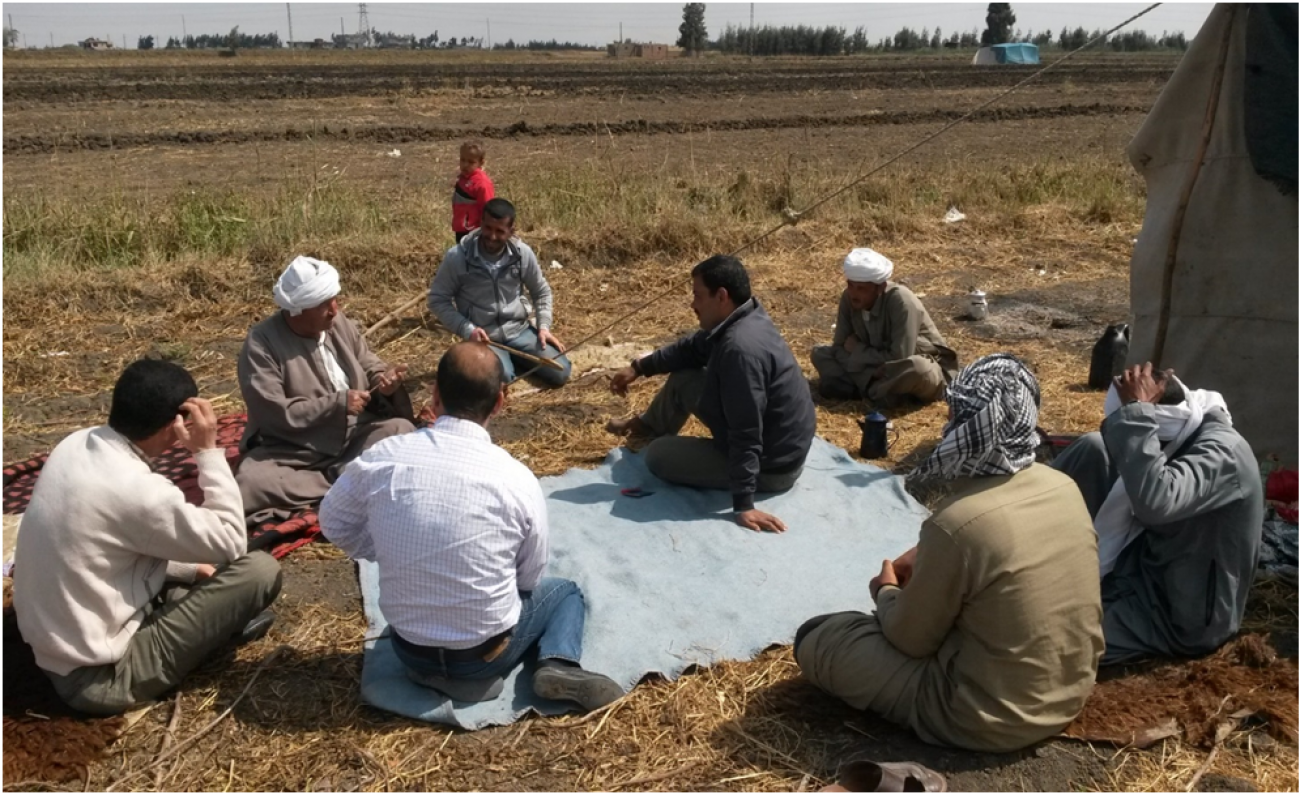
Both Nour and Layla married men from their clan. They wear heavy golden earrings and one of them also wears a nose ring. In the nomad Bedouin families, the women carry all their valuable possessions on their bodies. The idea of women having their own salary and travelling without the protection of a man seems utterly foreign to them. Both women are illiterate, and Nour admits she cannot even read the time on the wrist watch she owns. Although Bedouin clans are known for strict marriage traditions, often following the ‘bint-am’ structure (marrying the daughter of your father’s brother), Nour and Layla insist that these habits are slowly loosening. When asked if men who wanted to get married had to pick a girl from the same qabila (tribe), Layla says: “It is not like before”. Nowadays Bedouin men can marry a girl from any tribe, even from the fellaheen, the sedentary peasant farmers, the women explain. However, when a Bedouin man marries a farmer woman, the wife would need a house and would not move around with the Bedouin clan. In this sense, marrying outside the tribe would mean that a Bedouin man would have to take up an entirely different lifestyle. When asking local farmers, they maintain the idea that ‘Arabs’ usually do not let their daughters marry farmers. They quote a popular saying which literally means: It is better for a girl to be eaten by a crocodile than to get married to a farmer.
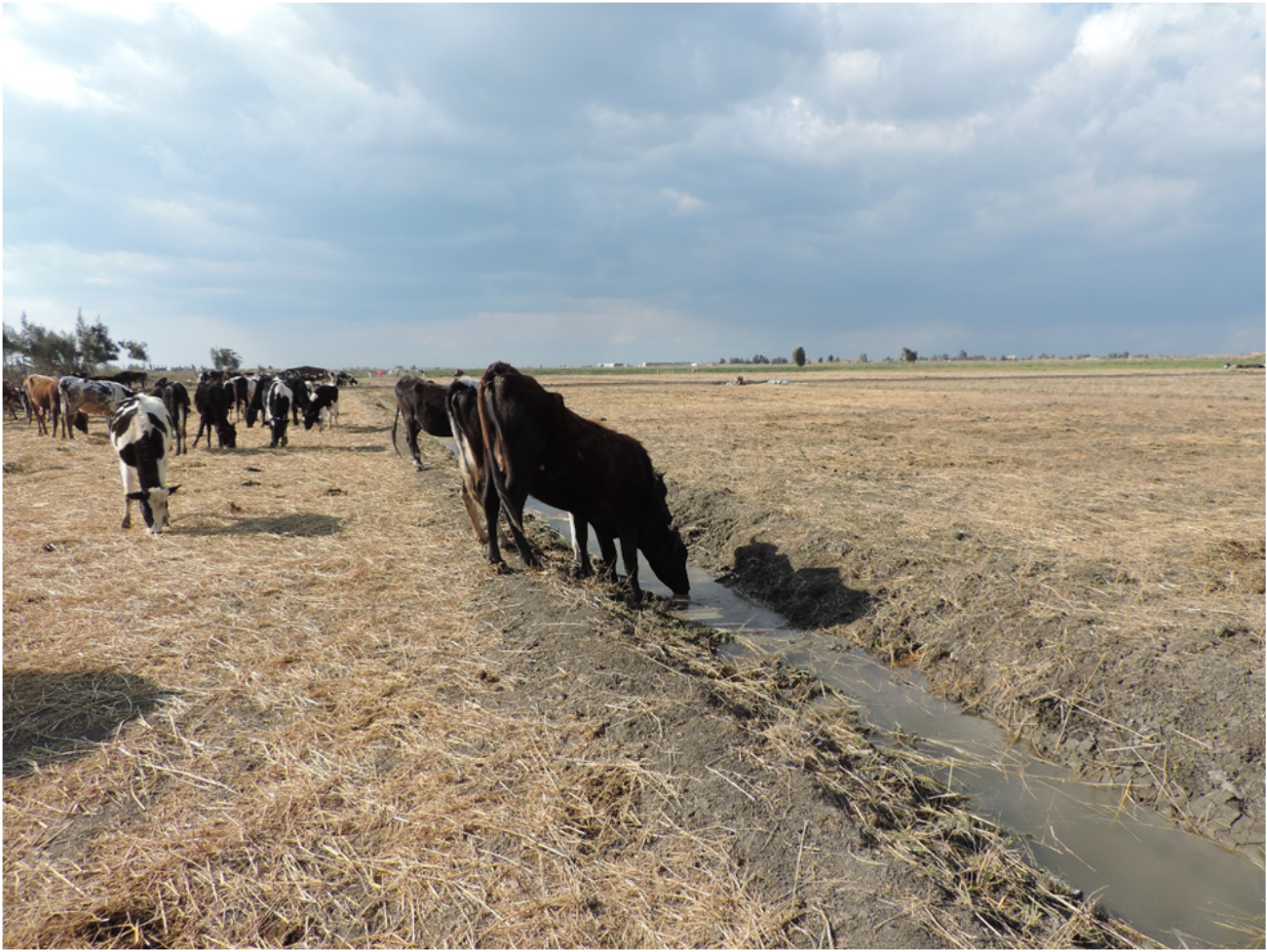
The Bedouin’s nomad livelihood is based on agricultural crop residues produced by farmers in the area. The livestock depends on drinking water brought to the fields in canals coming from the El Salam Canal and from Bahr El Baqar drain. In each location the nomads stay, they have to find and negotiate access to drinking water for themselves and their herds, but often the farmers are forthcoming in helping them, as giving water to the thirsty is also a religious duty. The nomads are used to “outdoor” washing and bathrooms, but to some extent rely on the good will of their host families. While relying on the ecosystem services of the El Salam Canal area from both agriculture and aquaculture provides for their very survival, the Bedouins themselves also provide important ecosystem services: an environmentally friendly way of getting rid of crop residues which may otherwise be burnt and an organic fertilizer in the form of cow dung, extremely beneficial for the often poorly structured soils.
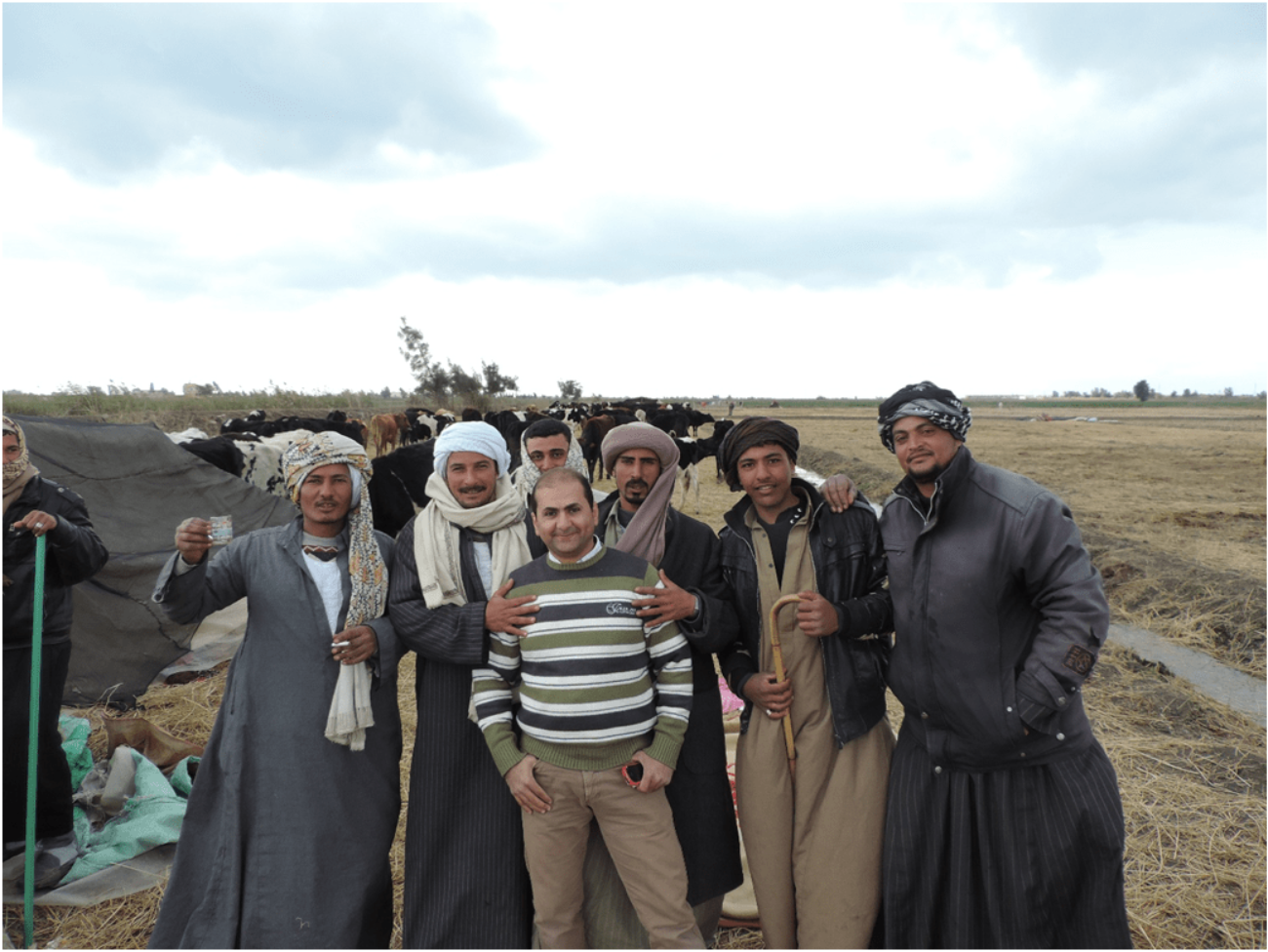
Nour’s father-in-law Mohamed and other members of the family are quite critical about government services and support, as well as about the use of sewage water from Bahr el Baqar to irrigate agricultural fields. Mohamed insists that he refuses to buy crops from the agricultural lands around the village of Tarek Ibn Zeyad for grazing, due to the bad quality of irrigation water from the Bahr el Baqr drain that farmers are forced to use there. “That water is black”, he says, pointing to the black color on the rug the men are sitting on. He says he would not give his cows this bad quality water to drink, fearing for their health. Nevertheless, he and his male relatives insist that the situation around the El Salam Canal area has significantly improved since the family first started coming to the area.

